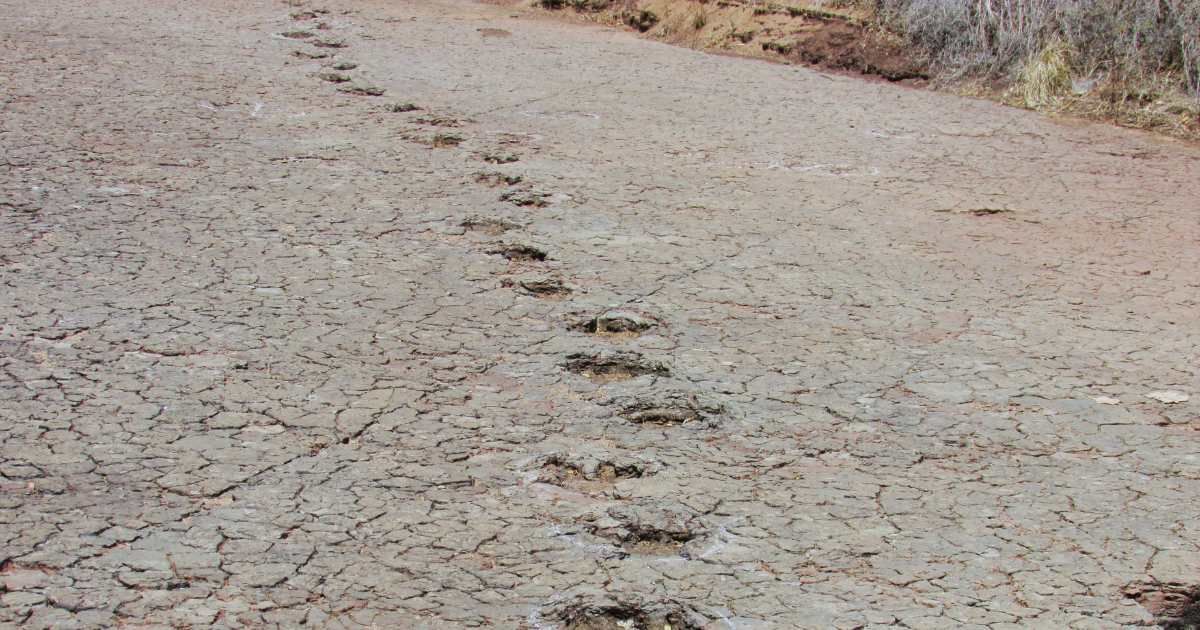Footprints of Dinosaurs Found 3,700 Miles Apart in Africa and South America Reveal Pangea Continent’s Hidden Secrets

Matching sets of dinosaur footprints found in Africa and South America gave experts more insight into how dinosaurs lived 120 million years ago. Louis L. Jacobs, a paleontologist at the Southern Methodist University in Texas, and lead author of the study analyzing these footprints claimed that the footprints were similar in age, shape, and geologic context, CNN reported.
In his opinion, this implies that the dinosaurs traveled across a type of highway before the two continents split apart. The study has been published by the New Mexico Museum of Natural History & Science.

Researchers associated with the study previously found almost 260 dinosaur footprints from the Early Cretaceous Period in Brazil and Cameroon, CNN reported. The current set of footprints have been discovered more than 3,700 miles (6,000 kilometers) apart on opposite sides of the Atlantic Ocean.
As per the study, the footprints were imprinted over a thin sandstone layer of silt and mud on the former supercontinent Gondwana, USA Today reported. Before the splitting of Gondwana from Pangea, the sets of footprints were 621 miles apart from each other. Gondwana, after separation, paved the way for the South Atlantic Ocean.
The study explains how the opposite sides of the Atlantic Ocean have geological connections with each other, and how the presence of footprints indicates that dinosaurs used the area as a habitat.
"One of the youngest and narrowest geological connections between Africa and South America was the elbow of northeastern Brazil nestled against what is now the coast of Cameroon along the Gulf of Guinea," Jacobs shared, USA Today reported. "The two continents were continuous along that narrow stretch so that animals on either side of that connection could potentially move across it."

The experts found that the majority of the footprints belonged to theropod dinosaurs, USA Today reported. The team reached this conclusion, by studying the characteristics of the footprints.
Certain footprints were attributed to sauropods or ornithischians. Paleontologists studied features like hip height, speed range, and body mass for each footprint type, to allocate a species to a certain footprint.
In the study, the researchers claimed that the location of footprints in Brazil's Borborema region and Cameroon's Koum Basin, helped them to find out where rifts formed in Earth's crust as tectonic plates shifted, during Gondwana separation, USA Today reported.
Alongside footprints, the researchers also discovered half-graben basins, structures that were formed when Earth's crust pulled apart from each other. Inside the basin, the experts saw river and lake sediments containing fossil pollen that might be 120 million years old.
Researchers associated with the study believe that the footprints provide new insight into dinosaur lifestyle before the splitting of Gondwana, CNN reported. "Dinosaur tracks are not rare, but unlike the bones usually found, footprints are the proof of dinosaur behavior, how they walked, ran or otherwise, who they walked with, what environment they walked through, what direction they were going, and where they were when they were doing it," Jacobs said.
The footprints and other findings also paint a picture of ancient climate and how different kinds of animals contended as well as depended on each other for resources, in the environment, as per the study, CNN reported.
"If your dog and a coyote walk across the same mudflat, you might know that two dog critters walked there, that they are very similar, but you may not be able to know if they are different species. Ditto the dinosaur track situation," Jacobs said.
"All animals have home ranges. All animals expand their ranges. All animals exploit resources as necessary depending on availability, often related to seasonality. Herbivores follow nutritious plants; carnivores follow their herbivorous food," Jacobs added.

One of the study's objectives was to understand how flora and fauna were impacted due to the splitting apart of the supercontinent, CNN reported.
"We wanted to put new and evolving geological and paleontological evidence together to tell a story more specifically of where and why and when dispersals between the continents happened," Jacobs said, CNN reported.
"One beauty of this Earth is that any of us can see that Africa and South America used to fit together like puzzle pieces. It is easy to conceive that in a connected world, animals, including dinosaurs, could and would be likely to move from place to place."